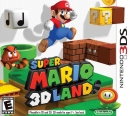Final-Fan said:
Joelcool7 said:
sguy78 said:
Where do you get that the NES and SNES were both graphically inferior to their competition?
|
The Sega MasterSystem was widely believed to feature superior graphical power to the Famicom (NES) and the Genesis is also widely believed to have been more powerful then the SNES. Of course you may mention StarFox and other games that utalized the chip set created to bring us spiffier graphics on the SNES. But in the end both platforms were inferior to the competition!
|
No no no. I'm not going to cover the Master System as I'm not too familiar with it and don't currently feel like doing that research; but the SNES was WAY more advanced than the Genesis. I mean, it's not too surprising, considering that it came out two years later.
I've quoted a large section from a great article below, but the short version is that the Genesis was good at being fast (like its mascot), but the SNES completely owned it at everything else (like its mascot?).
http://www.kombo.com/article.php?artid=10238&pg=4

"The Super NES/Super Famicom was a first in terms of hardware design. Gunpei Yokoi started what would become an industry hardware design standard when he designed the console. It would also become a flaw for Sega to exploit in advertising. The Sega Genesis had a 7.61 MHz Motorola 68000 processor at its core. At the time, this was fast for a console. The Genesis had pure processing power, and a separate 8-bit chip to handle the music and sound effects that was known for its distinct use of FM synthesis, made famous by 1980's pop music for its distinctively "metal" sound. For that year and a half on the market, Sega's visuals were undeniably superior compared to the NES's ancient capabilities, and the Turbografx's 8-bit processor with supporting graphics chips that NEC falsely advertised as a 16-bit core. The Genesis sound was also the best on the market at the time, and even though superior sound chips were on the horizon, many people still loved the Genesis's distinct sound.
"In comparison, the Super NES seemed like a slug when you looked at the specs alone as its core processor was only 3.58 MHz. The key to the setup was that Yokoi had designed the machine to be based on the performance on its companion chips, known as PPU1 and PPU2 (Picture Processing Unit). These two graphics chips functioned in tandem with one-another to let the Super NES perform built-in, hardware-based sprite manipulation effects that the Genesis could only dream of, such as sprite scaling, sprite rotation, distortion, multiple background layers, fog, transparency, and the legendary Mode 7 scaling and rotation combo effect that allowed for a flat background to be laid down and scrolled in a way that provided a mock 3D environment. On top of that was a difficult to program for, but ridiculously high achieving custom eight channel Sony sound chip known as the SPC700.
"Using samples rather than synthesis, the SPC chip was capable of delivering anything from an orchestral score to heavy metal, to bongos and haunting choir voices, along with clean, clear voice samples courtesy of its low pass filter. For years, the music that would be squeezed from this console would be unrivaled, and is still loved today. Each machine had its strengths and weaknesses. The Super NES could pump more sprites and colors (256 versus the Genesis' 65), but it suffered from a chronic slowdown problem with large or fast moving objects due to the underachieving processor. This caused fast arcade style games to suffer, and those happened to be the Genesis's specialty. First generation games such as Gradius IIIshowed this all too well with the game sometimes even suffering from sprite flickering, a symptom that was supposed to have died with the NES. The Genesis could move things at insanely fast speeds with no expensive cartridge expansion chips, but it couldn't do much else with them which caused more frames to be needed, which in turn, caused memory ROM sizes in the cartridges to go up. Also, it was far more expensive to build special Genesis cartridges with performance enhancement chips than it was for the NES. Performance enhancement chips for the Super NES merely were used to boost the machine's clock speed, while the Genesis needed expansion chips in cartridges that would allow it more powerful graphical manipulation tools. This was far more complicated and expensive than a simple co-processor speed boost."
|























































